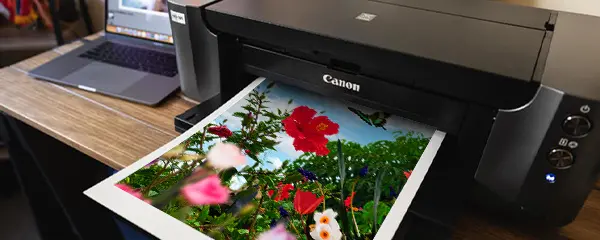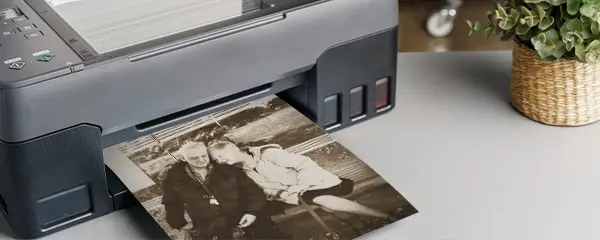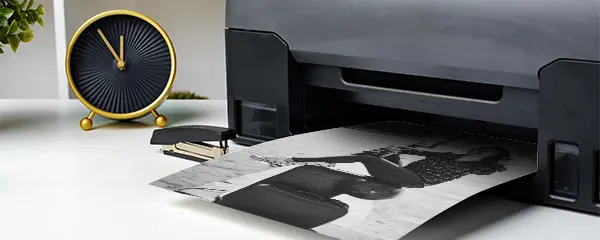
Professional Printing Quality with Double-Sided Photo Paper
2024-07-12
Photo Printing at Home with Inkjet Photo Paper
2024-07-19Choosing the right photo paper can significantly impact the quality and appearance of your printed images. With so many options available, it’s essential to understand the differences between glossy and matte photo paper to make an informed decision. This article will explore the characteristics, benefits, and best uses of both glossy and matte photo paper, helping you select the ideal paper for your printing needs.
What is Inkjet Photo Paper?
Inkjet photo paper is specially designed to work with inkjet printers, offering high-quality results for photographic prints. These papers are coated with a layer that absorbs ink quickly and accurately, producing vibrant colors and sharp details.
The Importance of Choosing the Right Paper
Selecting the appropriate photo paper is crucial as it affects:
Color reproduction
Image sharpness
Print longevity
Overall aesthetic appeal
Glossy Photo Paper
Glossy photo paper is a popular choice for printing photos due to its shiny, reflective surface. This type of paper is coated with a smooth, glossy finish that enhances the vibrancy and depth of colors. Glossy paper is known for its high contrast and ability to showcase sharp details, making it ideal for printing images with bright colors and fine details.
Characteristics of Glossy Paper
Glossy photo paper features a smooth, reflective surface that gives prints a shiny appearance. This type of paper is known for:
High color saturation
Vibrant and punchy images
A professional, polished look

Vibrant images
Advantages of Glossy Paper
Vibrant Colors: The reflective surface enhances color intensity, making images pop.
Sharp Details: Glossy paper often provides better detail rendition, especially in shadow areas.
Professional Appearance: Ideal for portfolios and formal presentations.
Ideal Uses for Glossy Paper
Portrait photography
Landscape prints with vivid colors
Marketing materials and brochures
Photo albums and scrapbooks

brochures
Matte Photo Paper
Matte photo paper, on the other hand, has a non-reflective, flat finish that provides a more subdued and professional look. This type of paper absorbs light rather than reflecting it, resulting in prints with a softer appearance and less glare.
Characteristics of Matte Paper
Matte photo paper has a non-reflective, slightly textured surface that diffuses light. Key features include:
Subdued color representation
Reduced glare
A softer, more artistic look
Advantages of Matte Paper
Reduced Glare: Easier to view in bright lighting conditions.
Fingerprint Resistant: Less prone to showing fingerprints and smudges.
Artistic Appeal: Provides a classic, timeless look to images.
Ideal Uses for Matte Paper
Fine art photography
Black and white prints
Textured or vintage-style images
Gallery exhibitions

Black and white prints
Comparing Glossy and Matte Papers
Color Reproduction
Glossy paper generally offers more vibrant and saturated colors, while matte paper provides a more subdued, natural color representation.
Detail and Sharpness
Glossy paper tends to showcase finer details and offer higher perceived sharpness due to its reflective surface. Matte paper may appear slightly softer but can enhance the overall mood of certain images.
Durability and Handling
Matte paper is often more durable and resistant to fingerprints and scratches. Glossy paper, while more prone to showing imperfections, can be protected with proper handling and storage.
Viewing Conditions
Consider the lighting environment where the prints will be displayed. Glossy prints may be challenging to view in bright, direct light due to reflections, while matte prints perform better in various lighting conditions.

photography
Choosing the Right Photo Paper for Your Needs
Personal Preference and Style
Your choice of photo paper should reflect your personal style and the type of images you’re printing. Glossy paper is great for vibrant, colorful prints, while matte paper offers a more professional and subdued look.
Purpose of the Print
Consider the purpose of your prints. For photos intended for display, glossy paper may be more suitable, while matte paper is ideal for professional portfolios and fine art.
Display Conditions
Think about where the prints will be displayed. Glossy paper may reflect light and show fingerprints, making it less suitable for high-traffic areas.
Cost Considerations
Price Differences
Glossy and matte photo papers vary in price, with glossy paper often being slightly more expensive due to its coating and finish.
Cost-Effectiveness for Various Projects
Consider the cost-effectiveness of each type of paper for your specific project. Matte paper may be more budget-friendly for large batches of prints.
Environmental Impact
Sustainability of Glossy vs. Matte Paper
Both glossy and matte photo papers have varying degrees of environmental impact. Some manufacturers offer eco-friendly options for both types.
Recyclability and Eco-Friendliness
Check the recyclability and eco-friendliness of the photo paper you choose. Some papers are made from recycled materials and have a lower environmental footprint.
Tips for Printing on Glossy and Matte Photo Paper
Printer Settings
Adjust your printer settings to match the type of paper you’re using. For glossy paper, use settings that enhance color and detail. For matte paper, settings that prioritize texture and subtlety are best.
Ink Compatibility
Ensure that the ink you’re using is compatible with the photo paper to avoid smudging and ensure the best print quality.
Handling and Storage
Handle photo paper with clean, dry hands to avoid fingerprints. Store paper in a cool, dry place to prevent damage.
Both glossy and matte photo papers offer unique benefits and are suitable for different types of projects. Glossy paper enhances color vibrancy and detail, making it ideal for vibrant, colorful images. Matte paper provides a professional, glare-free finish, perfect for black and white photography and fine art prints. Understanding the characteristics and best uses of each type of paper will help you choose the right one for your needs, ensuring that your prints look their best.
Related:
Magic of Double-Sided Photo Paper: Glossy and Matte Finishes
The Ultimate Guide to Choosing and Using Inkjet Photo Paper

